Text and Photos by Maggie Steber
Editors Note: APF Reporter Vol.11 #3 exsisted only as a photo copy, becuase of this the pictures in this story are of poor quality.
A balmy pre-evening breeze brushed the terrace. Port-au Prince sprawled in the view below like a shiny jewel, the whitewashed, domed presidential palace standing as its centerpiece. The scene passed like some great silent symphony until the anthropologist broke the quiet.
“Water and deforestation problems have been cocktail conversation here for years,” he said. matter-of-factly, resuming a conversation that had gone silent for a few beats. “For years, people have been predicting the impending doom of Haiti saying it’s just around the corner,” he said, glancing at his watch, as though it marked the time until Haiti’s doomsday.
We sat on his veranda as an orange-red Caribbean sun set into the sea. Further below, down from the hill where the anthropologist’s house perched, people had gathered at the front gate of a big, white stucco house, the one-time residence of an influential Tonton Macoute who had shot a hole in the kitchen wall of the host’s house. It was never learned whether it was by accident or on purpose.
The people brought buckets and plastic jugs to fill with water. They were waiting there, about 20 of’ them, for the water system to be turned on so they could get supplied here and forego the long trek up the hill to the public water fountain.
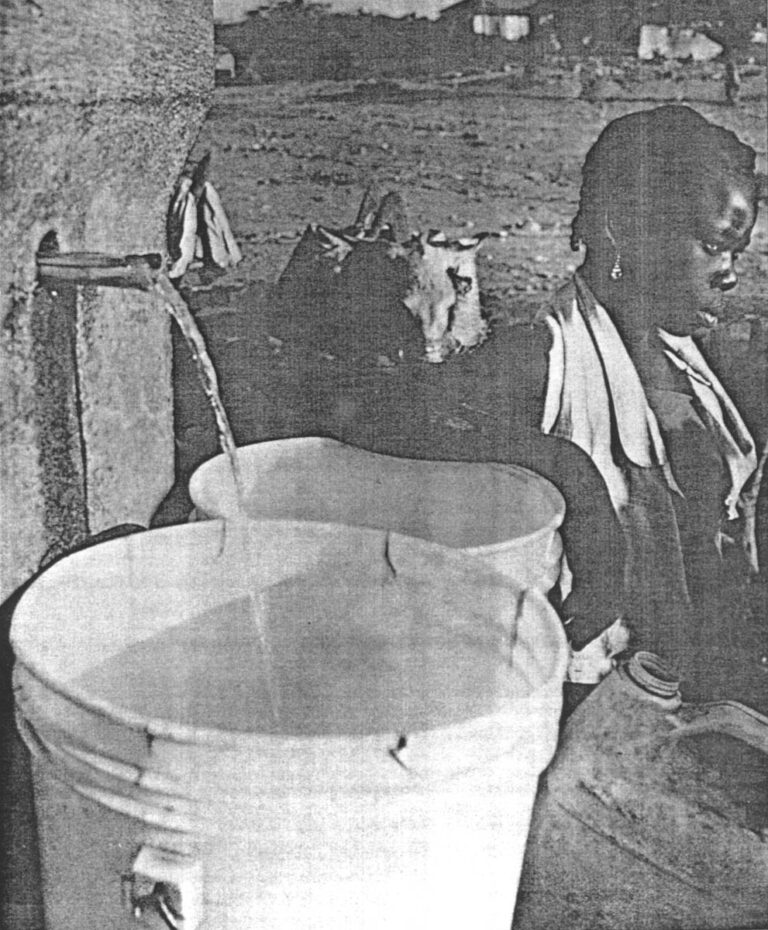

Up the hill, out of sight, a larger crowd of people gathered around the only public water fountain in the area, set in a small, idyllic gully shaded by tall trees and surrounded by expensive houses. Each day for several hours, the public water system was turned on so that local residents from the bidonviles (carton cities) could get their supply. They had no water in their shanties. Some people brought towels and washed themselves with their first load of water and then stood in line again for water to take home. Little was wasted, because sometimes the public supply didn’t work.
Later that evening, it rained long and hard. Soil mixed with huge stones washed down the hillsides. The roads. all of which lead to the harbor and slums lining the port, became impassable. People abandoned their cars and found them the next day crashed into the walls of’ the national cemetery, where bodies had been washed out of their caskets. People walked gingerly around gaping graves to get a look at the decomposed corpses.
In the slums, people stood on their beds during the night of rain as it swelled the canals of sewage that run alongside their shanties. The mixture of rocks and mud and sewage flooded their dirt floors by nearly a foot. Babies cried and already-exhausted people who desperately needed sleep didn’t get any. Rats swam where they could and otherwise drowned. Even after the water subsided, the mud remained and people sank into it up to their knees as they made their way to their jobs the next day.

Before the rainstorm was over, Haiti had lost tons of precious topsoil from the hills surrounding Port-au-Prince, along with thousands of gallons of water reserves. Some people drowned in the deluge. Here, as if in some evil pact, the problems of deforestation and lack of clean water played out their drama in which the Haitians were caught as unhappy victims.
No matter how many environmental, agriculture and forestry experts in American and international aid agencies one talks with, there are no illusions that even the best techniques available today can save Haiti. It will never be restored to the richest jewel that adorned France’s colonial crown in the 18th century. The French brought a million African slaves to clear the forests for sugar and coffee. As a result, a huge part of Haiti’s precious woods were felled. This was followed by a procession of lumber companies in the 19th century that paid large sums to landowners and corrupt government officials for access to the forests. The Haitian peasantry also was in need of fuel, building materials and crop lands. They cut down more forests and ended up being blamed for the devastation, now in epic proportions.
The country is dependent on wood; charcoal is used for 76 percent of Haiti’s energy needs. Experts says that bakeries, rum distilleries, and housewives use the charcoal equivalent of 27 acres of wood each day.
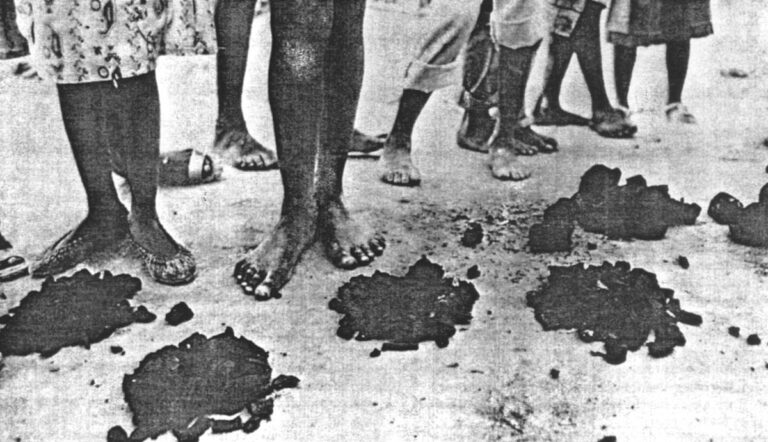
At the beginning of the 16th century, Haiti was mostly covered with lush forests of great ecological variation. Today, the forest cover has been reduced to only 2 to 4 percent of the land, according to figures from the U.S. Agency for International Development. The single largest forest left in Haiti, the Foret des Pins, covers only 26,400 hectares of land and is being reduced by chopping daily. (One hectare equals 2.47 acres). The loss of trees has caused the destruction of 21 watersheds for the country. Floods and droughts are the result and alternately plague the countryside.
Land in Haiti is overtaxed by population. The average density as a whole is 560 persons per square mile. But only 20% of the land mass is arable and half the country’s people live on this 20%. Because of erosion and over-farming, only 11% of all land is now capable of sustained farming,
“Trees are an endangered species here for many reasons,” a Haiti-based United National development expert related. “Whether we cut the last tree in the next two years or the next twelve is really unimportant. For every two trees planted, one survives if we are extremely lucky. After that, it still takes seven years for it to grow.
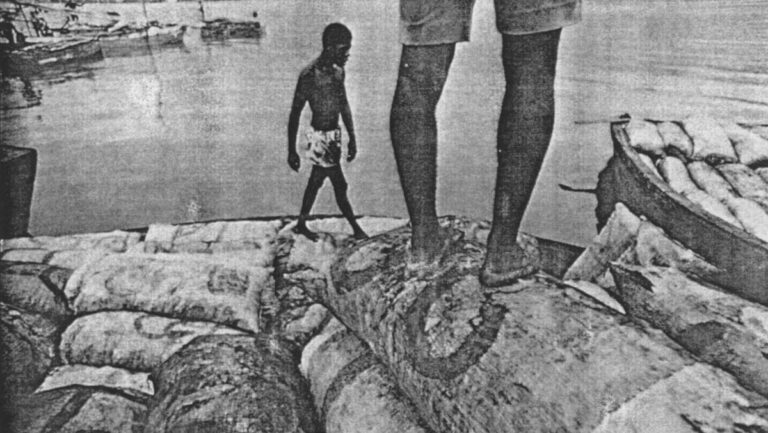
“Another problem is the deep mistrust of the central government. And we have to find the correct way into the community, which is still a problem for aid agencies, no matter if we are U.N. or U.S. or private. Especially as Americans, we tend to repeat the same mistake, thinking a powerful community leader is the door to the people.
“In Haiti, these usually have been Macoutes, the bullies of the Duvalier regime, and the people hate them and all they are connected with. We’ve had projects destroyed or go bad because of this. There is extremely poor coordination between all these different programs.
“Our actions here in Haiti show no sensitivity to what is going on. Really, solving these environmental problems is about changing a way of life. In reality, we cannot change things here…What the U.S. doesn’t know about this hemisphere outweighs what it knows.”
Walking across the barren horizon of the Plaine des Arbres in impoverished northwestern Haiti, a woman balanced firewood on her head. When she came across a piece of wood, which was rare because the land had been picked clean or trees or wood, she would stoop to pick it up and add it to her load, which she held steady with the other hand. She would cook with it or sell it to the local charcoal vendor for a few cents to buy food in this flatland where none is grown. There is too much salt in the soil. Its scene is that of complete devastation, devoid of vegetation. Small tree stumps hold their ground, bleached white like the bones of animals. How they are still there at all, in this forsaken terrain, is a miracle. People are said to eat the trees here, as there is nothing else to eat. It is one of the poorest places in Haiti. The land has been starved and choked and now yields only sandy, salty soil that causes its inhabitants to starve to death, too. The salt flats stretch for miles, illustrating the worst case scenario of deforestation and its effects. It is nature overpowering man here and yet, there is that indomitable spirit that Haitians seem to have, insisting on living here and managing to eke out some kind of’ life.
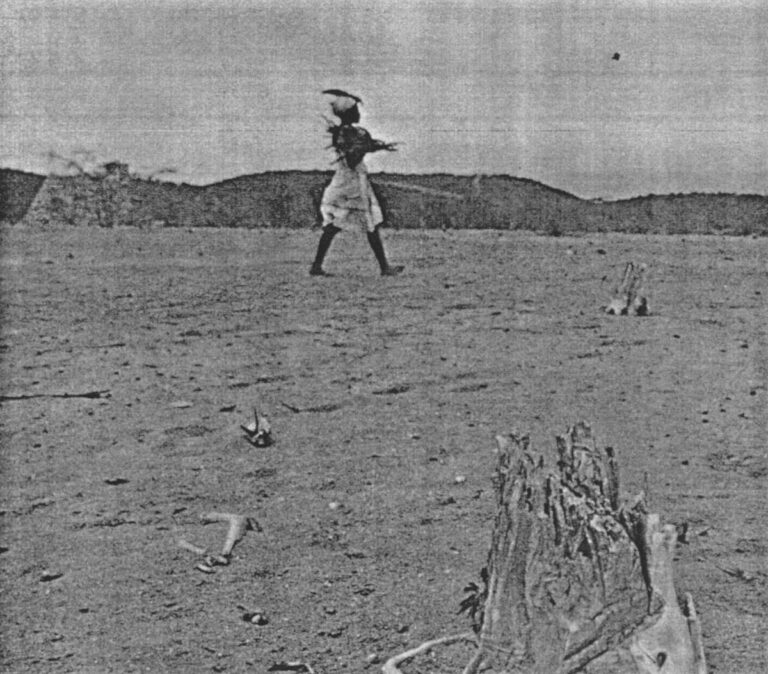
It turns out that the woman collecting wood is from Duverger, a green village in south Haiti near Les Cayes. It was her birthplace, but she left it long ago. Still, she spoke of it like some treasure that her present environment made all the more precious.
At Duverger, everything is green from the rainy season. The trees stand tall and are of every kind: breadfruit, coconut, palm, eucalyptus and others, growing with small plots of crops planted around them. Farmers work in their cultivated fields, stomping seeds into the soil with their bare feet. Peas, corn and manioc are raised. Running through it all is the small Duverger River, which offers a comfort to its neighbors unknown throughout barren Haiti.
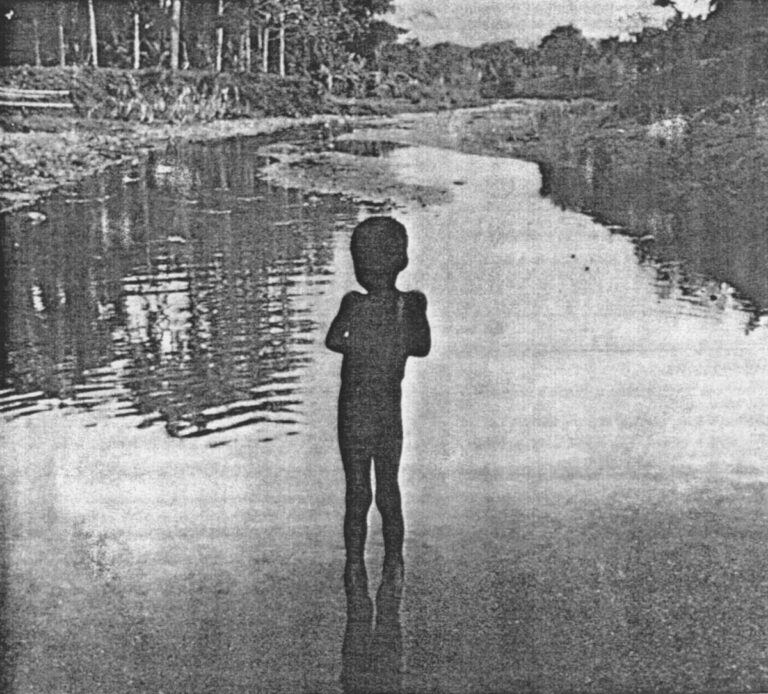
Here they may find water for cooking, drinking, bathing and washing clothes. It also serves as a social gathering place, a scene for gossip, for first pangs of romance, and as a playground for children who splash in its waters.
Here a man might not own the land he tills but he will never hunger or thirst. For work he can always cut down trees to sell for charcoal and lumber as previous generations did. On the mountains that surround Duverger, where once forests had stood in an elegant paradise, the trees that remain stand lonely and prophetic.

“If we treat this as a crisis in Haiti, the problems of water and deforestation, many people say you will have to kill the peasants, if not directly than indirectly, by forbidding their way of life,” the anthropologist explains.
“The crisis of deforestation is a convenient way to say that the peasants are at fault,” he added. “This excuse was used 120 years ago and is still used. For a peasant, it is better to cut down trees on his land or to make charcoal to sell than to kill his one pig in order to bury his daughter who died because he couldn’t afford the medicine to save her. It could only have a different ending if everything began from the start.
“You can’t reclaim land that has become salinated because there was no ground cover to save the watershed. You can’t put back the soil that is washed from the mountaintops and from the plains that feed into the rivers and the ocean. You can’t empty the residue of topsoil that pours into the man-made lakes created by the Peligre Dam. You can’t keep floods from sweeping people and homes away when the rains cause the rivers to overflow.
“You see, it’s too late for Haiti. That’s an unofficial line. Those of us involved with aid, with helping Haiti, must promote the official line that something can help. CARE and U.S. AID and the United Nations planted 14 million trees over the past four years here. Only 50 percent will survive. Other non-government agencies such as CARITAS (Catholic relief organization) have managed to replace 20 percent of the tree biomass cut every year, but all these figures together simply cannot save Haiti in actual fact.
“Aid money pours in for projects but it goes into the wrong pockets. Even when the money or technical assistance goes directly to the people who need it, someone here wrenches it away or uses it for purposes other than it was meant. The Haitians cut down the equivalent of 48 million trees yearly. They live without access to water. Their farming systems are self-defeating. Their markets aren’t geared toward successful self-reliance. The list of bad luck stories goes on forever.
“I don’t see how these people get up every day. Environmental destruction, political turmoil, every health problem imaginable. Outside interference by superpowers. No breakfast when they wake up and no fancy suit to die in. It’s a life a dog doesn’t deserve.” The anthropologist finished his drink and surveyed in silence the majesty of the city below as all the problems he described turned invisible in the dusk.
U.S. Agency For International Development
Executive Summary Report, 1986:
“In Haiti, not only is the most arable land already being utilized, but the total area under some form of agricultural production is six times greater than the estimated area of good agricultural land. About one-third of all lands are extremely eroded, abandoned for farming, or saline and practically sterile, due to inappropriate land use practices including farming, grazing and tree cutting. The end result of this indiscriminate tree cutting and intensification of cultivation is tremendous soil erosion. Each year, the equivalent of 6,000 hectares of valuable arable land are lost to erosion. Over the past 40 years, estimates of remaining “good” arable land in Haiti show a consistent decline of as much as 3 percent per year.
The extensive reduction of forest cover and the widespread cultivation of lands unsuited for annual crop production, without any attention to soil conservation practices, has led to the catastrophic state of erosion throughout the country and the subsequent serious danger to the agricultural potential of the lowlands. It is evident that a high percentage of all cultivated lands are being farmed beyond their carrying capacity, resulting in escalating and potentially irreversible land degradation process.”
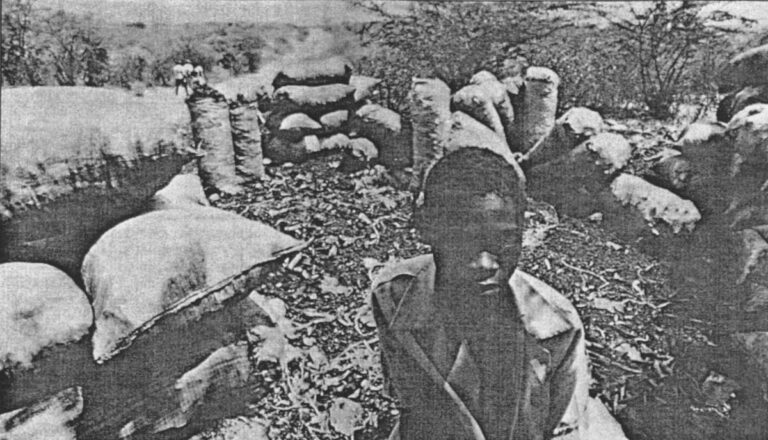

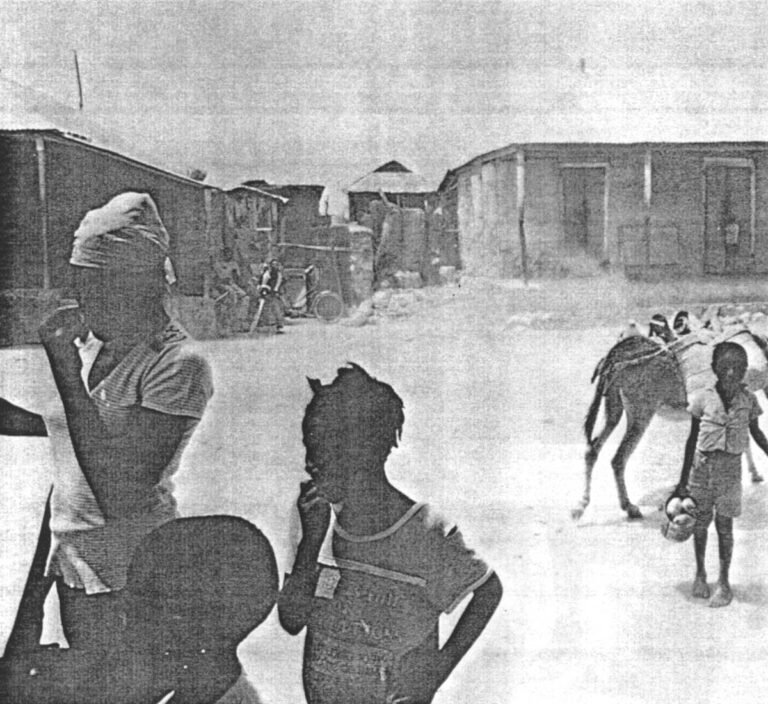
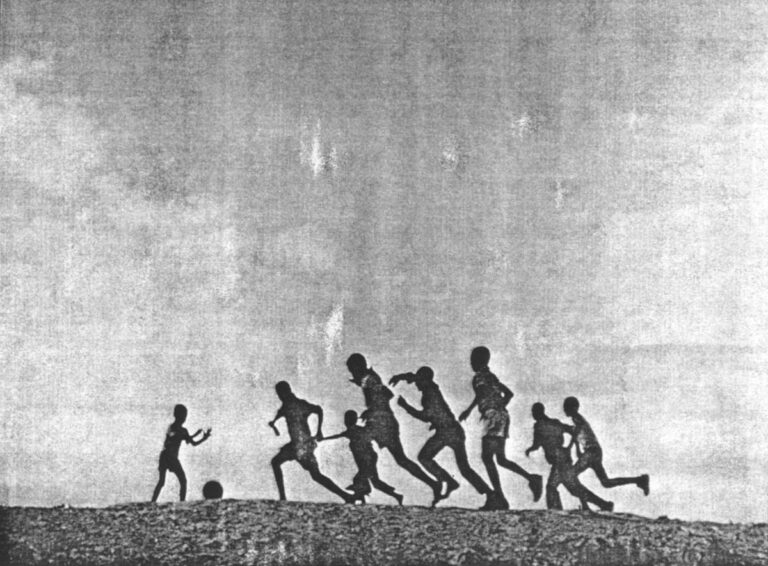
©1988 Maggie Steber
Maggie Steber is a freelance photojournalist, is examining life in Haiti after Duvalier.




